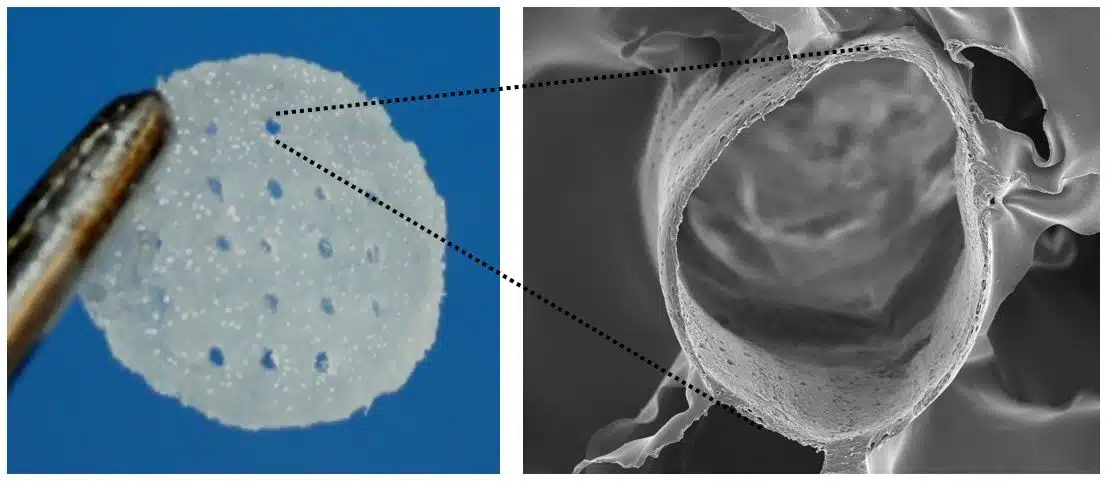Jelena Rnjak-Kovacina, and her team at the University of New South Wales and Tufts University in the USA, are using silk to grow blood vessels.
The work takes us one step closer to using bioengineered tissues as a viable alternative to donor organs and tissues.
Bioengineers can build many tissues such as skin, bone, and muscle in the laboratory, but their biggest barrier to upscaling has been the lack of a blood supply.
In the human body, cells in thick layers of tissue depend on an extensive network of blood vessels, which deliver oxygen and nutrients to every cell in the body and take away harmful waste products.
In artificial tissue without blood vessels, oxygen and nutrients can only reach about half a millimetre into the tissue. So only small, thin artificial tissues can be successfully built. And we certainly cannot build artificial organs such as livers and hearts.
To address this Jelena has designed scaffolds out of silk, which mimic the features of the natural blood vessels and promote blood vessel growth. She has found that simple structures like hollow channels in the scaffold can promote this process.
“So far, it’s very encouraging,” says Jelena. “The channels improve oxygen and nutrient delivery to cells before they are implanted in the body, and they provide space for native blood vessels to grow into the constructs.”
“If these new structures can be incorporated into artificial body parts, they would not only allow larger, thicker artificial structures, but also, potentially more complex shapes – even artificial organs.”
This work is patent protected and has been published in major peer-reviewed journals in the field.
Read more about Jelena’s work: https://research.unsw.edu.au/people/dr-jelena-rnjak-kovacina
Contact: Jelena Rnjak-Kovacina, UNSW, j.rnjak-kovacina@unsw.edu.au

Silk biomaterial with hollow channels that mimic the vasculature and promote blood vessel ingrowth [from Wray et al. (2012) Biomaterials, 33: 9214-9224].





 Fresh Science is on hold for 2022. We will be back in 2023.
Fresh Science is on hold for 2022. We will be back in 2023.